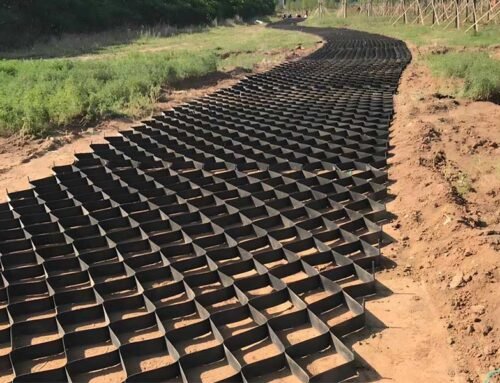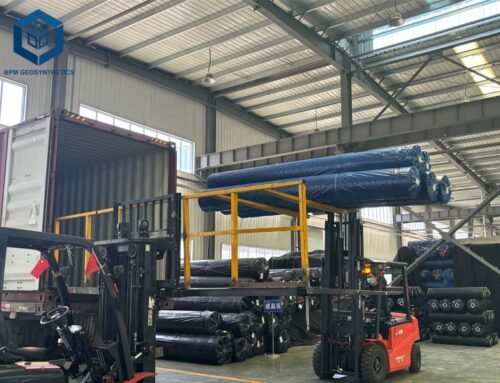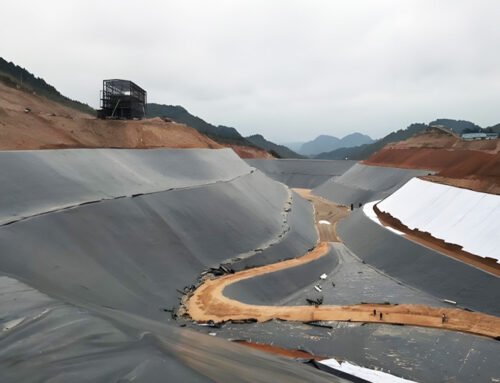Geosynthetic materials are the synthetic products that are made from polymeric materials and used in a wide range of applications such as civil engineering, transportation, environmental and sustainable building projects. As the leading geosynthetic materials manufacturer, wholesaler and supplier, The Best Project Material Co., Ltd (BPM Geosynthetics) has been dedicated to supplying one stop geosynthetic materials and services to worldwide customers since its foundation in 2007.
1. What Are Geosynthetic Materials?
Geosynthetic materials are synthetic products specifically designed for use in geotechnical and civil engineering applications. They are made from polymers such as polypropylene, polyester, polyethylene, or polyvinyl chloride (PVC). These materials are engineered to possess specific properties that enhance their performance in various geotechnical and civil engineering functions.
Geosynthetics are widely used to solve engineering challenges related to ground stabilization, erosion control, drainage, filtration, separation, reinforcement, and containment. They provide cost-effective and sustainable solutions for a range of applications in infrastructure development, environmental protection, and construction projects.
There are several types of geosynthetic materials, including:
1.1 Geotextiles
These are permeable fabrics made from synthetic fibers. Geotextiles are used for filtration, separation, and reinforcement purposes. They can prevent the migration of fine particles, control soil erosion, and enhance the strength and stability of soil structures.
1.2 Geogrids
Geogrids are high-strength, grid-like structures made from polymers or metallic materials. They are used to reinforce soil, providing tensile strength and stabilizing slopes, embankments, and retaining walls. Geogrids can distribute loads, reduce settlement, and improve the overall stability of the soil.
1.3 Geomembranes
Geomembranes are impermeable synthetic membranes used for containment and barrier systems. They provide a barrier against fluid or gas migration and are commonly used in applications such as landfill liners, reservoirs, ponds, and canals.
1.4 Geocomposites
Geocomposites are composite materials that combine two or more geosynthetic components. They are designed to provide multiple functions, such as filtration, separation, and drainage. Geocomposites offer increased efficiency and versatility in various applications.
1.5 Geocells
Geocells are three-dimensional honeycomb-like structures made from geosynthetic materials. They are used for soil stabilization, slope protection, and erosion control. Geocells confine and reinforce soil, preventing lateral movement and promoting vegetation growth.
The use of geosynthetics offers numerous benefits, including improved soil stability, enhanced drainage, increased load-bearing capacity, erosion control, and environmental protection. Geosynthetic materials provide cost-effective and sustainable solutions, reducing the need for traditional construction materials and minimizing environmental impact.
Geosynthetic materials play a vital role in modern geotechnical and civil engineering practices, providing versatile and effective solutions for a wide range of engineering challenges.
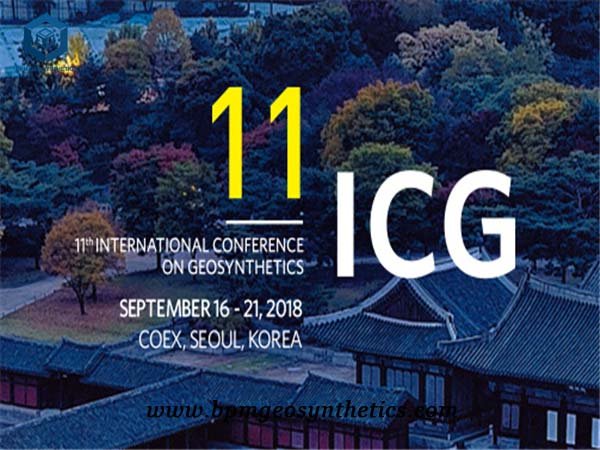
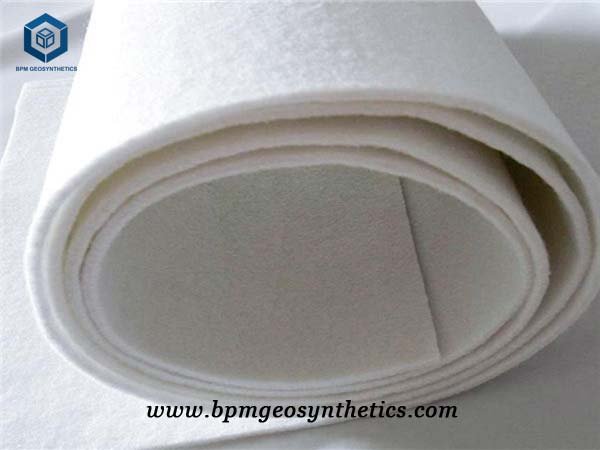
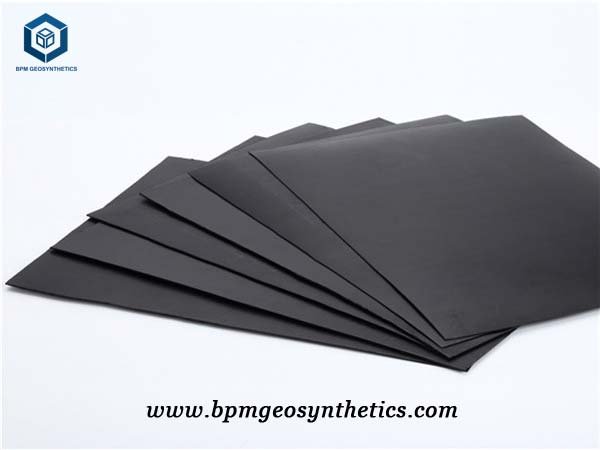
2. BPM Geosynthetic Materials Show on the 11th International Conference
BPM will attend the 11th International Conference on Geosynthetics in Seoul. They will showcase their geotextiles, geomembranes, and other materials. The conference runs from September 16 to 21, 2018. It’s a major event attracting many participants. About 1,000 subscribers and over 100 companies worldwide are expected.
2.1 Popularity and market influence
BPM aims to increase its visibility and market presence at the conference. They hope to use this opportunity for marketing and expansion. The event will showcase BPM’s innovative geosynthetic products and their applications.
At the conference, BPM can interact with experts, researchers, engineers, and potential customers. This will foster collaborations and partnerships within the industry.
BPM’s participation in the 11ICG shows its dedication to the geosynthetics industry. They aim to display their products and keep up with industry trends. By attending, BPM contributes to the advancement of geosynthetics technology.
2.2 BPM Geosynthetics
BPM Geosynthetics has been a leader in the industry for over a decade. They specialize in researching, developing, producing, and installing geosynthetic materials. BPM offers a range of innovative and high-quality products like geomembranes, geotextiles, and GCLs. They manufacture over 6 series of geosynthetics to meet various needs.
3. What are the applications of Geosynthetic Materials?
Geosynthetic materials, being factory-manufactured polymer products, have a wide range of applications in industrial projects. They are particularly useful for addressing various geotechnical challenges and enhancing the stability and durability of civil engineering structures. Here are some key applications with a focus on industrial projects:
3.1 Reinforced Soil Structures:
Geosynthetic materials such as geogrids and geotextiles are commonly used to reinforce soil in retaining walls, embankments, and roadbeds. This reinforcement helps to increase the load-bearing capacity of the soil, reduce settlement, and prevent soil erosion. For example, in the construction of highway embankments, geogrids can be layered within the soil to provide additional tensile strength and stability.
3.2 Erosion Control:
Geosynthetic materials like geotextiles and geonets are extensively used for erosion control in various industrial projects. They help to protect slopes, riverbanks, and channels from the effects of water flow and wave action. By stabilizing the soil surface and preventing the loss of soil particles, these materials contribute to the longevity and safety of the structures they are used in.
3.3 Waterproofing and Separation:
Geomembranes, which are impermeable geosynthetic materials, are often used for lining reservoirs, ponds, canals, and landfills to prevent seepage and contamination of groundwater. Additionally, they can serve as a separation layer between different materials, such as soil and aggregate, to prevent intermixing and maintain the integrity of the structure.
3.4 Foundation and Base Reinforcement:
In industrial buildings and infrastructure projects, geosynthetic materials can be used to improve the performance of foundations and base layers. For instance, placing a geogrid at the base of a shallow foundation can help distribute the load more evenly and reduce differential settlement. Similarly, using a geocomposite material as a cushion layer under concrete slabs can enhance the load distribution and minimize stress concentrations.
3.5 Green Wall Construction:
Recently, there has been an emerging trend of using geosynthetic or geosynthetic-like materials to form green walls on the exterior or interior of buildings. These green walls not only provide aesthetic benefits but also contribute to environmental sustainability by improving air quality, reducing energy consumption, and providing insulation. The integration of vegetation with geosynthetic materials offers a sustainable solution for urban environments.
4. BPM Geosynthetic Materials
At that time, BPM will show the following high quality geosynthetic products such as smooth geomembrane, short fiber non woven geotextile, filament non woven geotextile, HDPE geogrid, geocell and drainage net, etc. Our main customers are from Australia, France, Sweden, UK, Hong Kong, Hungary, New Zealand, Poland, Mexico, Ecuador, Brazil, Pakistan, Bangladesh, Thailand, Vietnam, Malaysia, Indonesia, Singapore, Philippines, Sri Lanka, India, UAE, Saudi Arabia, Qatar, Kenya, Ghana, Ethiopia, Somalia, Nigeria, South Africa, Swaziland, Mongolia etc. Our Booth Number is 6-J-1I.
Welcome all of you come to visit us for further business negotiations.
Any questions or inquiries, please fill the following form to let us know.

